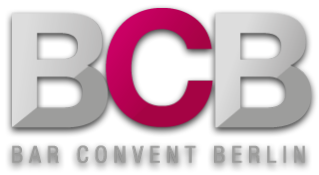A closer Look at the year-round alcohol-free Trend
© Shutterstock
What do you think of the trend of observing culinary theme months like Veganuary, Alcohol Free April, Dry January? At least “Sober October” is less likely to be taken to heart by many visitors to Bar Convent Berlin. In personal discussions and when studying the sales figures, however, it quickly becomes clear that the constantly growing number of non-alcoholic drinks does have an impact on society and gastronomic concepts.
When it comes to the sales of low and no-alcohol products, especially the German market is leading. In an extensive study, experts from the International Wines and Spirits Record (IWSR) surveyed ten relevant international markets (Australia, Brazil, Germany, France, Great Britain, Japan, Canada, Spain, South Africa and the USA). Between 2018 and 2022 they registered market growth from US$ 8 billion to US$ 11 billion. Germany proved to be the biggest market here, followed by Japan and Spain.
Growing markets – new target groups
The head of IWSR’s No & Low-Alcohol Study, Susie Goldspink, has analysed target group trends: “The dynamic no/low-alcohol category presents opportunities for incremental sales growth as consumers are recruited from drinks categories such as soft drinks and water. Brand owners have an opportunity to recruit non-drinkers of alcohol.” Goldspink goes on to say: “As more people opt to avoid alcohol on certain occasions – or abstain from it altogether – no-alcohol is steadily increasing its share of the no/low category.”
Stay Sober & Dry Dating
Add to this, other phenomena occurring especially in the younger target group of Gen Z and, in future, in its successor “Generation Alpha”. Both target groups are highly attractive for the beverage industry since they are having, or will soon have, their first encounters with alcohol, thereby charting the course for their future as consumers. At present, the Millennials are still the target group with the highest purchasing power.
Gen Z is very active on social media thereby revealing many interests and trend phenomena of relevance to marketers. One of their current trends is “Dry Dating”, i.e. foregoing alcohol during the first date. Hashtags such as #sober, #sobriety, #sobersex, #mindfuldrinking or #sobertwenties are spreading like wildfire. Analyses of the dating Apps Tinder and Hinge reflect this phenomenon where dates are more focused on checking the options of a genuine, lasting relationship rather than regretting the consequences of a one-night stand in a drunken state shortly afterwards.
For analogue (especially female) readers the books currently addressing this topic are entitled: “Quit Like a Woman: The Radical Choice to Not Drink in a Society Obsessed with Alcohol” by Holly Whittaker, “Chianti for Breakfast: Diary of a Woman who stopped Drinking and Started Living” by Clare Pooley or “Unabhängig – vom Trinken und Loslassen” (Independent – of Drinking and Letting Go) by Eva Biringer. There is a clearly more feminine side to the no-alcohol fashion.
Non-alcoholic drinks at the bar?
Many restaurateurs feel the demand from consumers – which is why the range of non-alcoholic aperitifs is growing and why non-alcoholic beers are seeing especially impressive growth rates. Just as impressive is the rising diversity in flavours and quality in the beer segment. Drinks retailers are also posting growing sales among end users who stock their home bars with non-alcoholic alternatives to serve to friends.
And what about the country’s cocktail bars? Numerous bartenders also confirm a rising demand for non-alcoholic cocktails. In the past, these often featured at the very end of the bar menu on a rather uninspiring page of non-alcoholic must-haves like “Shirley Temple” and “Virgin Colada”. Once a chore, this is now increasingly becoming a challenge our mixologists are happy to rise to – coming up with ever-new and by all means exciting creations.
The view on non-alcoholic distillates, however, is still ambivalent. Many bartenders regard these new products as exciting and versatile to use in long drinks and cocktails. Especially the non-alcoholic alternatives to vermouth, bitters, sparkling wine and rum are suitable for sophisticated mixes. Other members of the bar community do understand why the non-alcoholic distillates are so high-priced because their production is occasionally more complex than that of their alcoholic originals but avoid the investment preferring to develop their own initiatives with cordials, syrups, Verjus, tea, Kombucha and other home-made ingredients. And the shorter shelf life of non-alcoholic products must also be taken into consideration.
New awareness – new knowledge
The No & Low category is constantly developing further. Market shares, diversity and quality are rising virtually day by day – allowing us to tap into new target groups and re-stimulate proven ones. But we all have to be aware of one key criteria: if the product says “non-alcoholic”, its residual alcohol content must not exceed 0.5 %. Consumer protection organisations struggled with this phrasing but fruit juices can also ferment and generate alcohol in the juice. Consumers who deem 0.5% still too much have to watch out for products advertising 0.0%.
Also a thing of the past are the disparaging looks towards customers ordering non-alcoholic drinks. Maybe that lady is not pregnant or the gentleman not the designated driver. There are many reasons for ordering drinks without alcohol. For bars this is a new opportunity to shine with exciting drinks.
Everyone is welcome at our bar, whether for a Negroni or a Nogroni.
Cheers!
